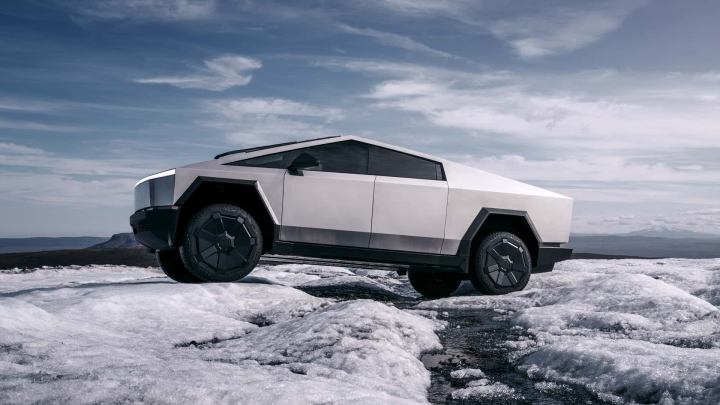
Tesla’s highly anticipated 2024 Cybertruck has officially hit the streets, with the company delivering a total of 10 production units to eagerly awaiting customers. Alongside the deliveries, Tesla took the opportunity to unveil key specifications and features, providing enthusiasts with a closer look at what the Cybertruck has to offer.
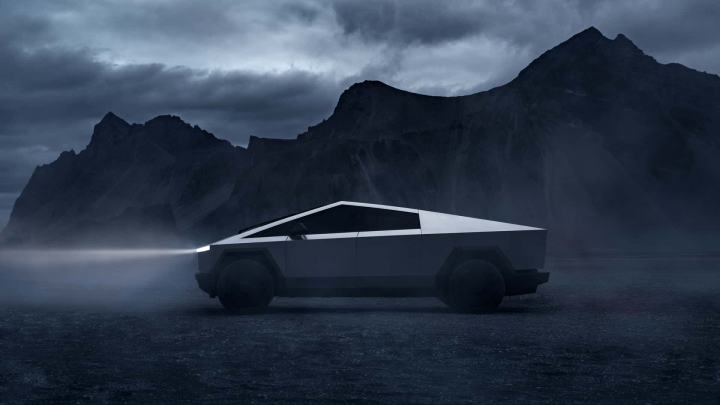
Photo: Tesla
One of the standout features of the Cybertruck is its impressive powertrain options. The three-motor all-wheel-drive variant, aptly named the Cyberbeast, boasts a staggering 845 hp, while the two-motor all-wheel-drive version offers a still-impressive 600 hp. The performance capabilities of the Cyberbeast are particularly noteworthy, with a zero to 100 km/h sprint time of 2.6 seconds and a quarter-mile coverage in just 11.0 seconds. Tesla showcased this by staging a drag race between the Cybertruck and a Porsche 911, with the added twist of the Cybertruck towing another Porsche 911. In addition to its speed, the Cybertruck is no slouch when it comes to utility, with a towing capacity of nearly 5000 kg and a payload rating of 1134 kg. The pickup’s 4×6-foot composite bed comes equipped with a standard rolling tonneau cover, adding to its versatility.

Photo: Tesla
Tesla’s online configurator is now live for those eager to configure their own Cybertruck. The cash price for the rear-drive variant starts at $60,990PHP 3,590,128INR 5,187,962EUR 58,569CNY 445,087, although this particular model won’t be available until 2025. The dual-motor version, set to hit the market next year, comes with a starting price of $79,990PHP 4,708,547INR 6,804,149EUR 76,814CNY 583,743, while the top-tier tri-motor Cyberbeast is priced at $99,990PHP 5,885,831INR 8,505,399EUR 96,020CNY 729,697 before any optional features. Of course, should gray market dealers or Tesla themselves decide to sell this truck in the Philippines, the price would be much more substantial.
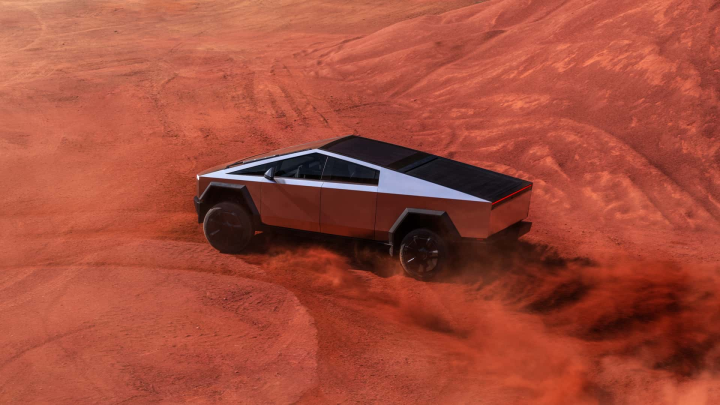
Photo: Tesla
Tesla’s commitment to innovation is evident in the construction of the Cybertruck. The distinct sheet metal is crafted from a stainless steel “super alloy” that eliminates the need for paint and ensures resistance to corrosion over time. Elon Musk proudly claimed that the sheet metal can even withstand gunfire from a .45-caliber Tommy gun, a 9mm Glock pistol, or a 9mm MP5 submachine gun.
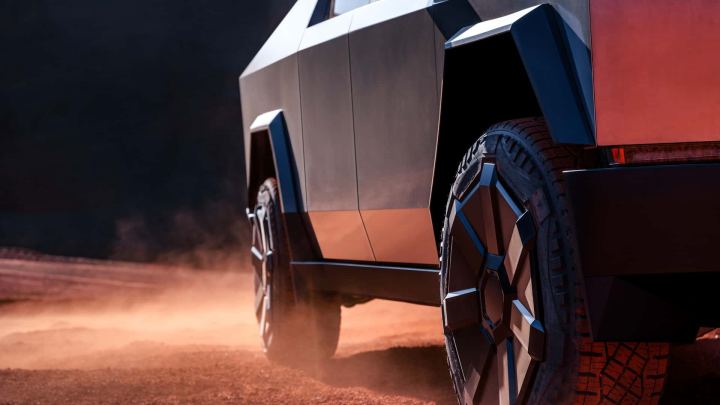
Photo: Tesla
Safety and structural integrity are at the forefront of the Cybertruck’s design. The chassis and skin provide claimed torsional rigidity surpassing that of the McLaren P1 hypercar, and the low placement of the battery contributes to the pickup’s stability, reducing the risk of rollovers in accidents. Tesla showcased the Cybertruck’s capabilities through sled tests, demonstrating its ability to dig into sand laterally at 25 km/h, tip slightly, and then return all four wheels to the ground.
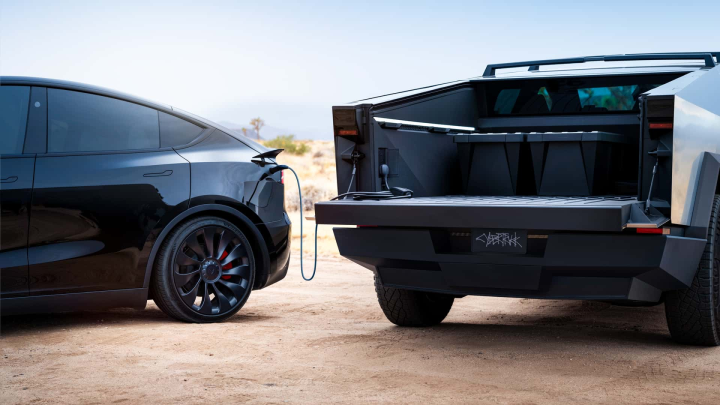
Photo: Tesla
Steering innovation is also a highlight, with the Cybertruck featuring steering by wire. This system adjusts the wheel angle based on vehicle speed, providing more aggressive angles at lower speeds for enhanced maneuverability. Musk asserted that the Cybertruck’s turning circle, at 37.1 feet, is smaller than what the Tesla Model S can achieve. However, the rear wheels align with the fronts at higher speeds to enhance stability.
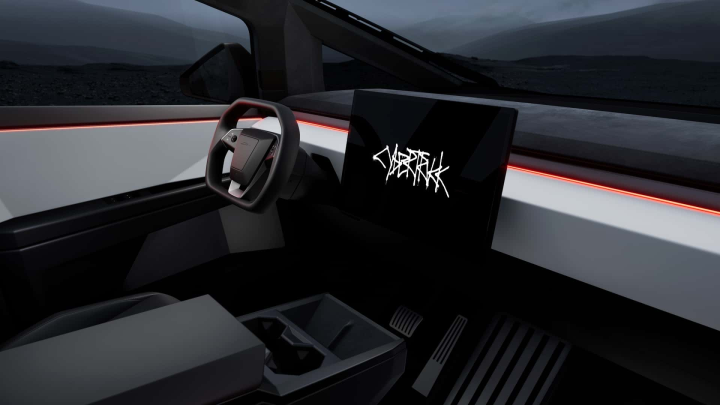
Photo: Tesla
While the Cybertruck is set to be initially available only in an all-wheel-drive configuration, a single-motor rear-drive variant is expected in 2025. The pickup’s four-corner air suspension ensures an impressive 17 inches of ground clearance, and a flat underbody helps prevent snags on obstacles. The front and rear differentials are equipped with locking capabilities, and the rear features active torque vectoring, enhancing maneuverability and traction.
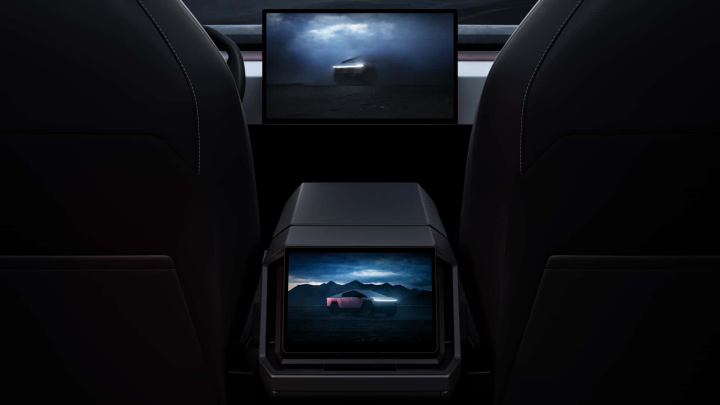
Photo: Tesla
Despite the wealth of information shared during the reveal event, some key details remain undisclosed. The battery size and EPA range of the Cybertruck were not revealed, leaving enthusiasts curious about the vehicle’s efficiency. Tesla estimates a 547 km range for the dual-motor Cybertruck and a 515 km range for the three-motor Cyberbeast. With a drag coefficient of 0.34 and a curb weight of 3107 kg, the Cybertruck’s performance is expected to outshine competitors like the GMC Hummer EV, raising hopes that it won’t require an exceptionally large 200-kilowatt-hour battery to achieve these impressive ranges.
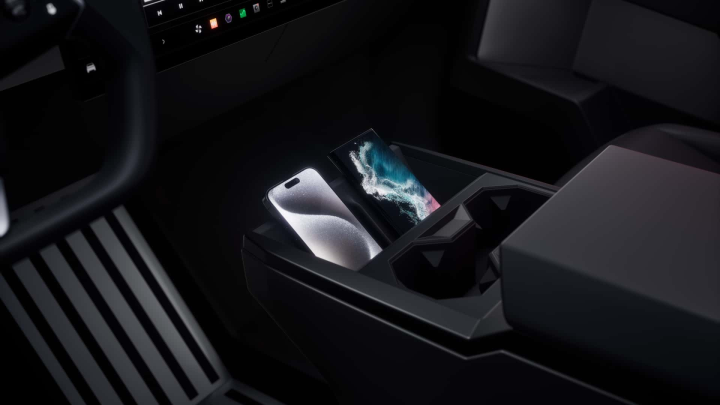
Photo: Tesla
In a move that aligns with the industry’s shift towards faster charging solutions, the Cybertruck will feature Tesla’s first 800-volt electrical architecture. This innovation is expected to facilitate rapid charging times, a crucial consideration as many automakers embrace the NACS charging standard used at Superchargers.
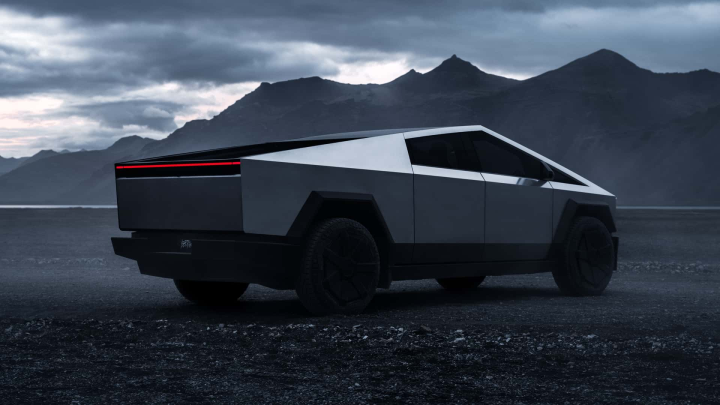
Photo: Tesla
All in all, the 2024 Tesla Cybertruck has entered the scene with a blend of cutting-edge performance, robust construction, and innovative features. As deliveries commence, Tesla enthusiasts and the automotive world at large eagerly await real-world experiences and reviews to see if the Cybertruck lives up to its bold promises and claims.


